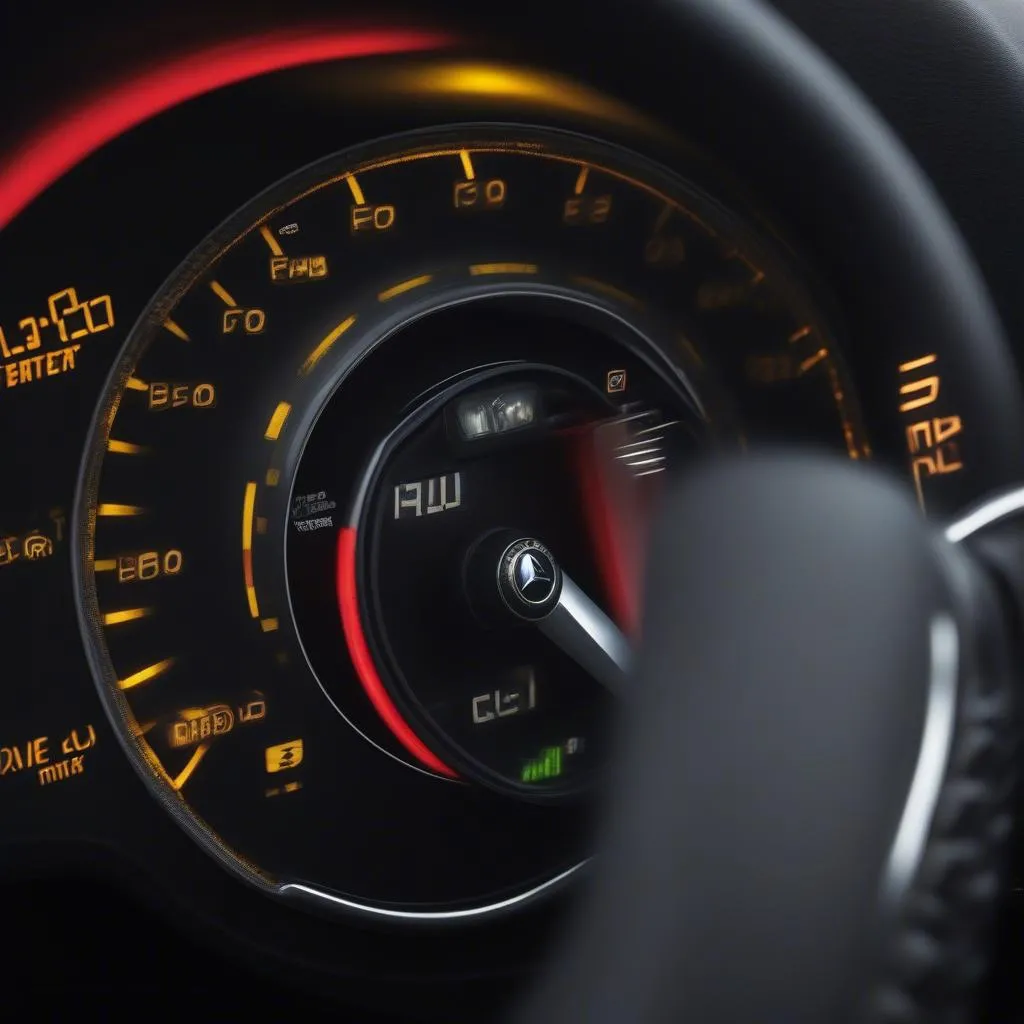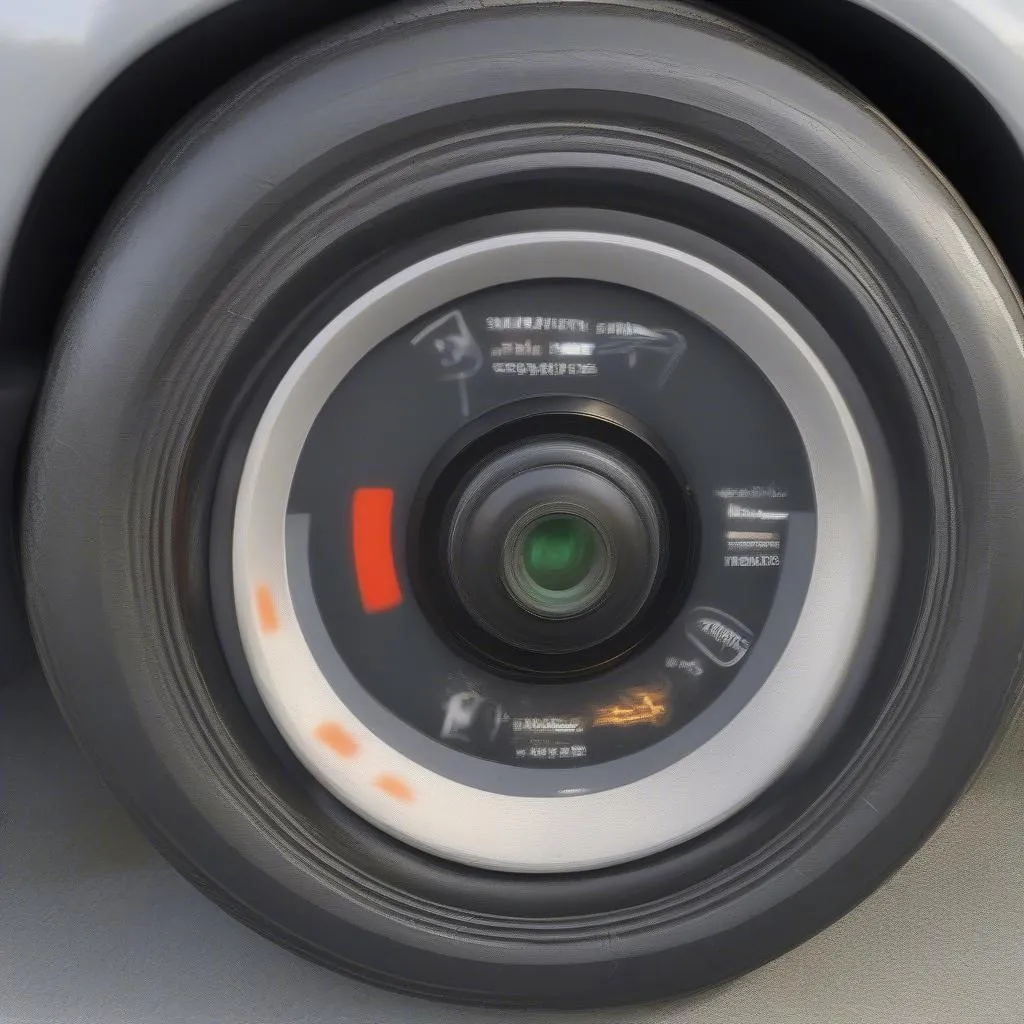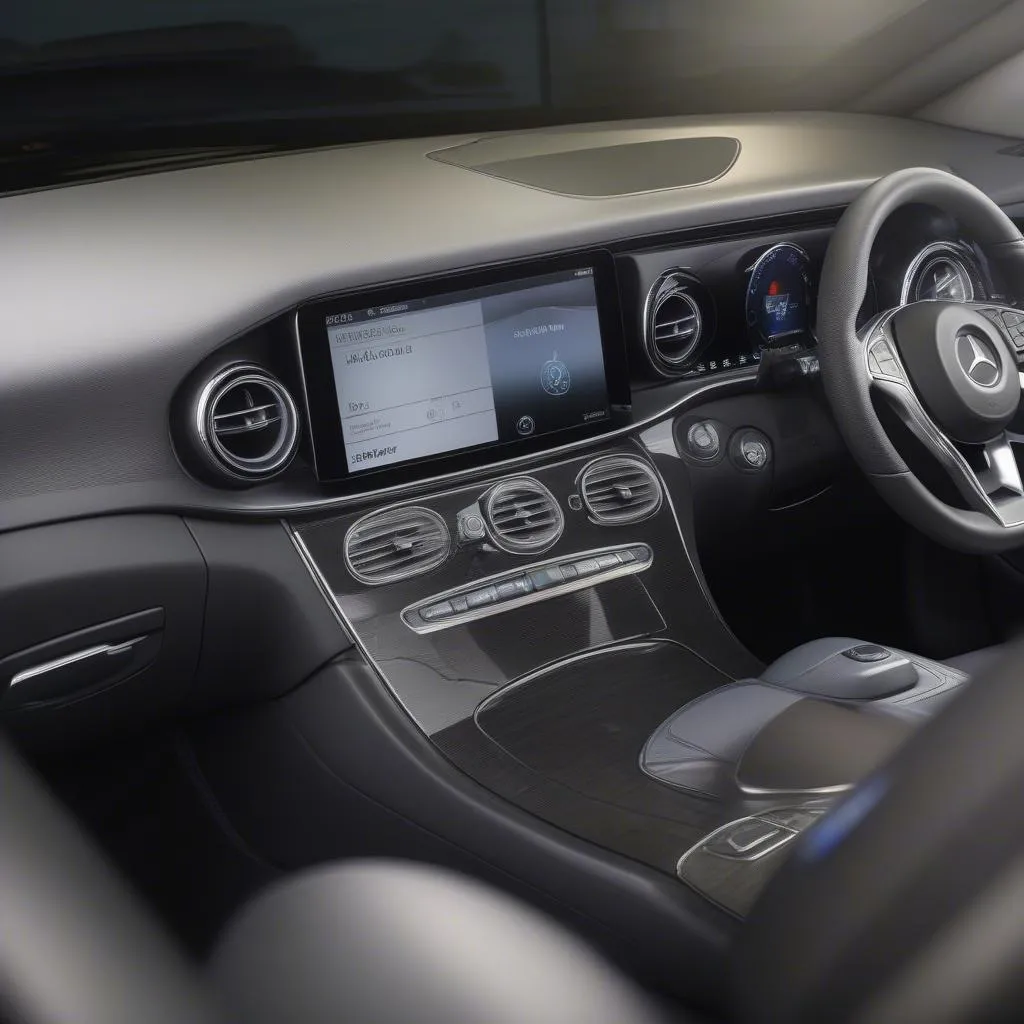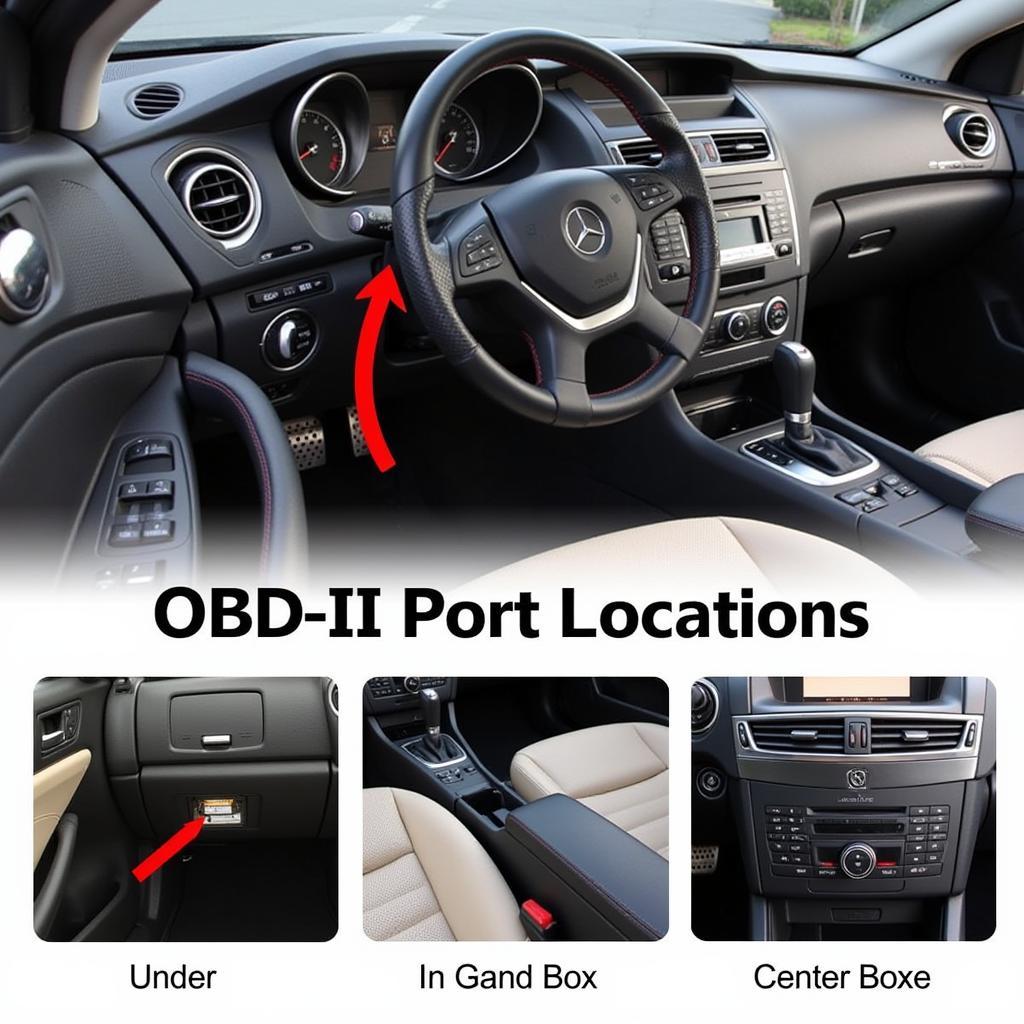Seeing a “Tire Pressure Monitor Inoperative” message on your Mercedes dashboard can be unsettling. Don’t worry, though. This is a common issue, and it’s often a straightforward fix. This guide will walk you through the common causes, how to pinpoint the issue, and the steps to get your tire pressure monitoring system (TPMS) back in tip-top shape.
Why Your Mercedes Tire Pressure Monitor Might Be Inoperative
There are several reasons why your TPMS light might be on:
- Low Tire Pressure: The most obvious reason is that one or more of your tires are genuinely low on air.
- Faulty Tire Pressure Sensor: These sensors, located inside each wheel, can wear out, become damaged, or have a dead battery.
- TPMS Control Module Issues: The module that receives signals from the sensors and triggers the warning light can malfunction.
- Recent Tire Work: If you’ve had your tires rotated, changed, or repaired recently, the sensors may need to be reset or there might be an issue with their installation.
 Mercedes TPMS Warning Light
Mercedes TPMS Warning Light
Recognizing a TPMS Issue
The warning will typically appear as a message on your dashboard, often accompanied by a yellow or red warning light resembling an exclamation mark within a tire tread.
Tools and Equipment
You’ll need a few basic tools to troubleshoot and potentially fix some TPMS issues:
- Tire Pressure Gauge: To check the actual pressure in each tire.
- Portable Tire Inflator (Optional): Useful for adding air if needed.
- TPMS Reset Tool (Optional): Needed for some Mercedes models to reset the system after adjusting tire pressure.
- OBD-II Scanner (Recommended): A more advanced tool that allows you to read and clear TPMS fault codes, providing specific insights into the problem.
 TPMS Sensor on Tire
TPMS Sensor on Tire
Troubleshooting Your Mercedes TPMS
Here’s a step-by-step guide to help you address the “Tire Pressure Monitor Inoperative” message:
-
Check Your Tire Pressure: The first and easiest step is to check the air pressure in all four tires using a tire pressure gauge. Your recommended pressure is usually listed on a sticker inside the driver’s side doorjamb or in your owner’s manual.
-
Inflate Tires & Reset TPMS: If you find a low tire, inflate it to the correct pressure. Many Mercedes models allow you to reset the TPMS through the infotainment system. Refer to your owner’s manual for specific instructions. Some models might require a TPMS reset tool.
-
Inspect the Sensors: If the light persists after inflating your tires and resetting the system, visually inspect each TPMS sensor. Make sure they’re free from damage and properly installed. If you recently had tire work done, double-check the installation.
-
Diagnose with an OBD-II Scanner (If Necessary): If the problem continues, an OBD-II scanner is your best bet. This tool plugs into your car’s OBD-II port (usually located under the dashboard on the driver’s side) and can read the specific TPMS fault codes stored in your car’s computer. These codes will pinpoint the issue, whether it’s a faulty sensor, a problem with the TPMS module, or something else.
-
Seek Professional Help: If the issue persists even after using an OBD-II scanner, it’s best to consult a qualified mechanic or your Mercedes dealership. Issues with the TPMS module or wiring often require professional expertise.
 OBD Scanner Connected to Car
OBD Scanner Connected to Car
Frequently Asked Questions About Mercedes TPMS
Q: Can I drive with the TPMS light on?
A: While you can technically drive with it on, it’s not advisable. The TPMS light indicates a potential problem with your tires or the monitoring system itself. Ignoring it could lead to unsafe driving conditions or further damage.
Q: How often do TPMS sensors need to be replaced?
A: TPMS sensors have batteries with an average lifespan of 5-7 years. However, they can wear out sooner depending on usage and environmental factors.
Q: Can I use any OBD-II scanner for my Mercedes?
A: While many generic OBD-II scanners can read basic engine codes, it’s recommended to use a scanner specifically designed for Mercedes vehicles to access TPMS codes and other advanced functions. Tools like those available at CARDIAGTECH offer compatibility and advanced features tailored for your Mercedes.
Q: How much does it cost to replace a TPMS sensor?
A: The cost of replacing a TPMS sensor can vary depending on your Mercedes model and labor costs in your area. However, it’s generally a straightforward repair for a qualified mechanic.
Keeping Your Mercedes Safe and Roadworthy
Addressing a “Tire Pressure Monitor Inoperative” message promptly is essential for maintaining safe driving conditions and preventing potential tire-related issues. By following these steps and seeking professional help when needed, you can ensure your Mercedes’ TPMS is functioning correctly, giving you peace of mind on the road.


